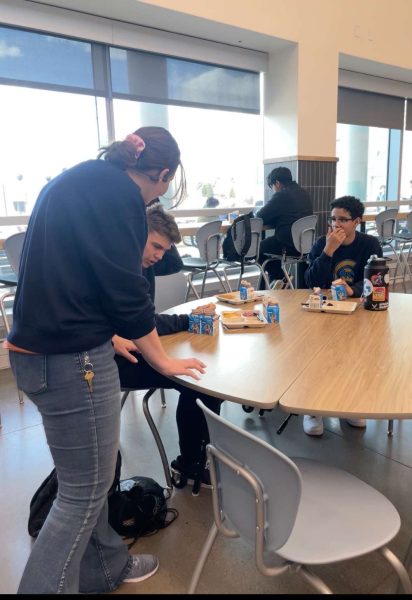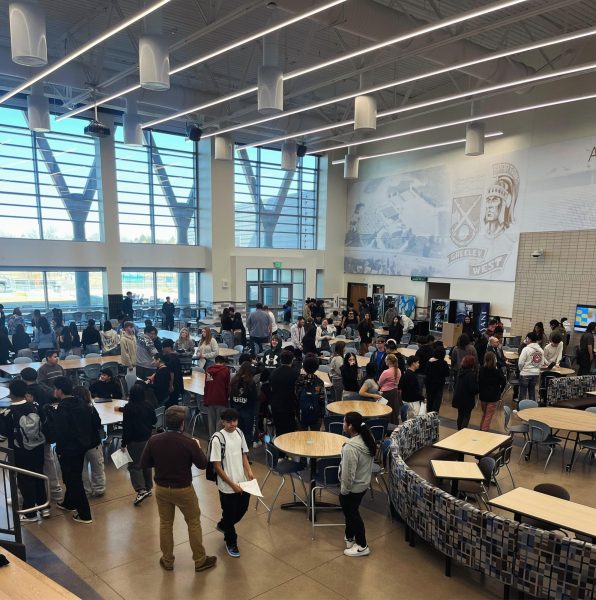Reactions vary in regards to quarter-system schedule
September 18, 2020
For many students and staff, this year has been full of unexpected changes and difficulties. Schedules have been one of the most challenging aspects of this new year.
Building the master schedule for any school is a challenge within itself. However, on top of an ever-growing health crisis, this feat becomes a trial for education and safety. For assistant principal Ms. Amy Zulauf, this balance between classes and COVID-19 protocols has been incredibly trying.
“We have had to do a lot of thinking with our schedules this year, and one of the things we have talked about, especially with our teachers is health and safety, and this new aspect of the master schedule, which we did not had to deal with before, directly impacted how we built our schedule. This made it very difficult to build a cohort schedule, while trying to get the classes students want,” Zulauf said.
This schedule, along with its puzzling complexity, has thrown some wrenches into the educational system. Because of the cohort recommendations put out by the state and health officials, schools had to move to a quarter schedule, which posed drawbacks to learning. As kids might have math, science, and language arts one quarter, the next nine weeks would be a gap in this knowledge attainment. This obstacle for students and teachers made coming back to in-person learning questionable. However, Greeley West’s principal, Mr. Jeff Cranson, calmed these uncertainties.
“We have designed these schedules, so that all the core classes will be practiced in multiple courses. For example, if a student has language arts for a quarter, and history in the next, then we hope these skills they have learned in language arts will be put to the test, and furthered as they write research papers and thesis statements,” Cranson said.
Even though these uncertain times have made drawbacks to the school year, there are also advantages to these new schedules. For many students, eight classes are hard to maintain grades, quality, and effort, but now students can focus on four courses at a time. This change can lead to less stress for students and teachers, as well as raise grade point averages for many students. Not only can students now deal with many aspects of their education, but also deepen their knowledge within a subject.
Cranson believes in making education a tool for the future, and his plans and ideas for this schedule reflect that “In many classes, students won’t be able to look into as many topics as they want, but this isn’t a bad thing. In many classes we tend to skim over topics, and not go in depth, so I hope this is a message for our society to slow down and really have students attain a deeper understanding, and get to a high level of thinking,” Cranson said.
For faulty members, this long and winding journey has been challenging, but also students need to adjust and evaluate this new schedule. For some, this change has been easy, but many students have a hard time adapting to these new schedules.
For senior Rosemary Mena, this schedule has its ups and downs, “I feel like the new schedule is like a double-edged sword, because it’s benefitting me by only having four classes, so less stress on me. But at the same time, I feel like it’s also hurting me because everything is at a much faster pace.“
Not only are students worried about the pace of classes, but also their rigorous AP and DP courses. Junior Payton Rath expressed his concerns. “It’s hard learning something in 9 weeks, compared to what I’m used to. I’m also worried about AP tests and what it will look like coming back to a class after not having it for 9 weeks. As we might be on our own for these tests,” Rath said.
Cranson had just one more thing to point out: “In the past few months we have been forced to advance ten years into the future, as far as technology, education, and safety, but there are many advantages to this. I hope we can learn from what COVID-19 is doing to education and re-evaluate what we need to be teaching. Instead of giving kids information, which we already have on our phones, they need to interpret that knowledge and turn them into skills, as that is what is important in this day and age.”





